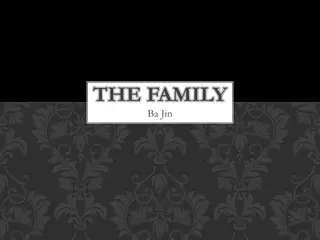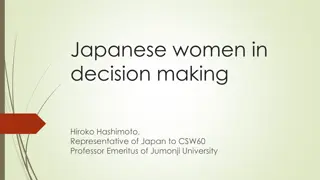Understanding Feudal Japan: The Tale of Genji and Tokugawa Shogunate
Explore the evolution of feudalism in Japan through the Heian Period, highlighted by Murasaki Shikibu's groundbreaking work, "The Tale of Genji." Delve into the decentralized governance of the Tokugawa Shogunate and the dynamics of power between central rulers and local lords. Uncover the cultural influences that shaped Japan's feudal hierarchy while reflecting on the legacy of Japan's unique historical periods.
Download Presentation

Please find below an Image/Link to download the presentation.
The content on the website is provided AS IS for your information and personal use only. It may not be sold, licensed, or shared on other websites without obtaining consent from the author. Download presentation by click this link. If you encounter any issues during the download, it is possible that the publisher has removed the file from their server.
E N D
Presentation Transcript
Quaestio: Was Japan truly feudal during the Tokugawa Shogunate? Nunc Agenda: Read excerpt Tale of Genji and answer the two questions
Yamato Dynasty First and only dynasty 500 CE- Present
CULTURAL BRIDGE Chinese culture and technology reached Japan through Korea
600s CE Yamato Prince wanted to learn straight from China. Many students, monks, and traders went to Tang Dynasty China. New Japanese capital copy of Tang capital
Heian Period 794-1185 CE Period of blending and selective borrowing. Noble families had power and lived elegant lives. Average people became angry and rebellious. Led to Feudalism!
Murasaki Shikibu Heian Period Writer Wrote world s first novel The Tale of Genji
Feudalism Decentralized government Central ruler has little real power Local rulers (lords) have real power Lords hire warriors as protection in exchange for land
Classwork As a group, use the reading on Feudal Japan to create a diagram of the Japanese feudal class hierarchy. Then answer the questions on the back.
Pensa Three Questions Debate Preparation Packet























